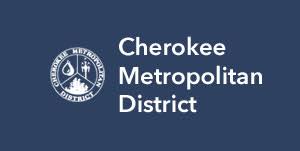Traditional Individual Retirement Accounts (IRA) may cause an income tax problem upon the death of the owner if there is no spouse as the named beneficiary or no other named living beneficiary.What I will discuss in this article is how to use a Roth IRA as a vehicle to pass on those dollars to your heirs, should you believe that you will not need the dollars during retirement.What is the benefit to you? In converting the traditional IRA, you are not bound by the Required Minimum Distribution (RMD) Rules imposed by the IRS. Your converted account could potentially grow, adding tax-free dollars to your estate. On the other hand, should you decide to take distributions from the Roth IRA, distributions do not affect Social Security income for seniors.The risk: The first is that you planned well and do not need the dollars during retirement. The second is that the rules do not change between then and now for this to be a cost effective planning tool.Death and taxes sound familiar? If you were to convert your traditional IRA to a Roth, you will pay income tax on the converted amount. If you have a large IRA, you can convert this over a period of years and work with your tax advisor to keep your taxes manageable. The pre-paying of income taxes from a taxable account assists the beneficiary and the taxable estate by the amount of the taxes paid.Beneficiaries will not owe any income taxes on the withdrawals they take from the inherited Roth IRA; however, there may be RMD requirements they need to meet. Even with the RMD, the heirs can take dollars over many years, leaving the corpus to continue to grow tax advantaged.Will this work in real life? Let’s take an example of a 70-year-old male who converts his traditional IRA and pays the income taxes on the conversion. He lives for another eight years, and then his wife inherits the Roth IRA. Since there is no RMD on the Roth for the wife, she could leave the money in the account for her 55-year-old son, and any growth on these assets will continue to accumulate tax free.Let’s say the widow dies eight years after inheriting the Roth and it passes to the now 63-year-old son. The son’s life expectancy is another 23 years. During that time, the son has to take out a minimum distribution every year, and now let’s say he takes only that minimum. The remainder of the dollars could continue to grow tax free inside of the Roth. The son’s wife is his named beneficiary and upon his death, she takes off on a world cruise with all that tax-free money she inherited from her father-in-law by way of her husband’s family. Just checking to see if you are still reading or if you gave up a long time ago! Eight years with the father, eight years with the mother and 23 years with the son equals 39 years of tax-free growth potential.πThis type of planning is auxiliary to a good estate plan and should be reviewed by a professional who understands long-term estate planning and the tax consequences that go along with it.For more information, visit www.alexdonnell1.sarep.com.1) Actual results will vary depending upon ages of the respective beneficiaries.Colorado Comprehensive Wealth Management719-886-3377Registered Investment Advisory RepresentativeSecurities America Advisors Inc.Member NASD, SIPCColorado Comprehensive Wealth Management and Securities America Advisors Inc. are independent companies.







